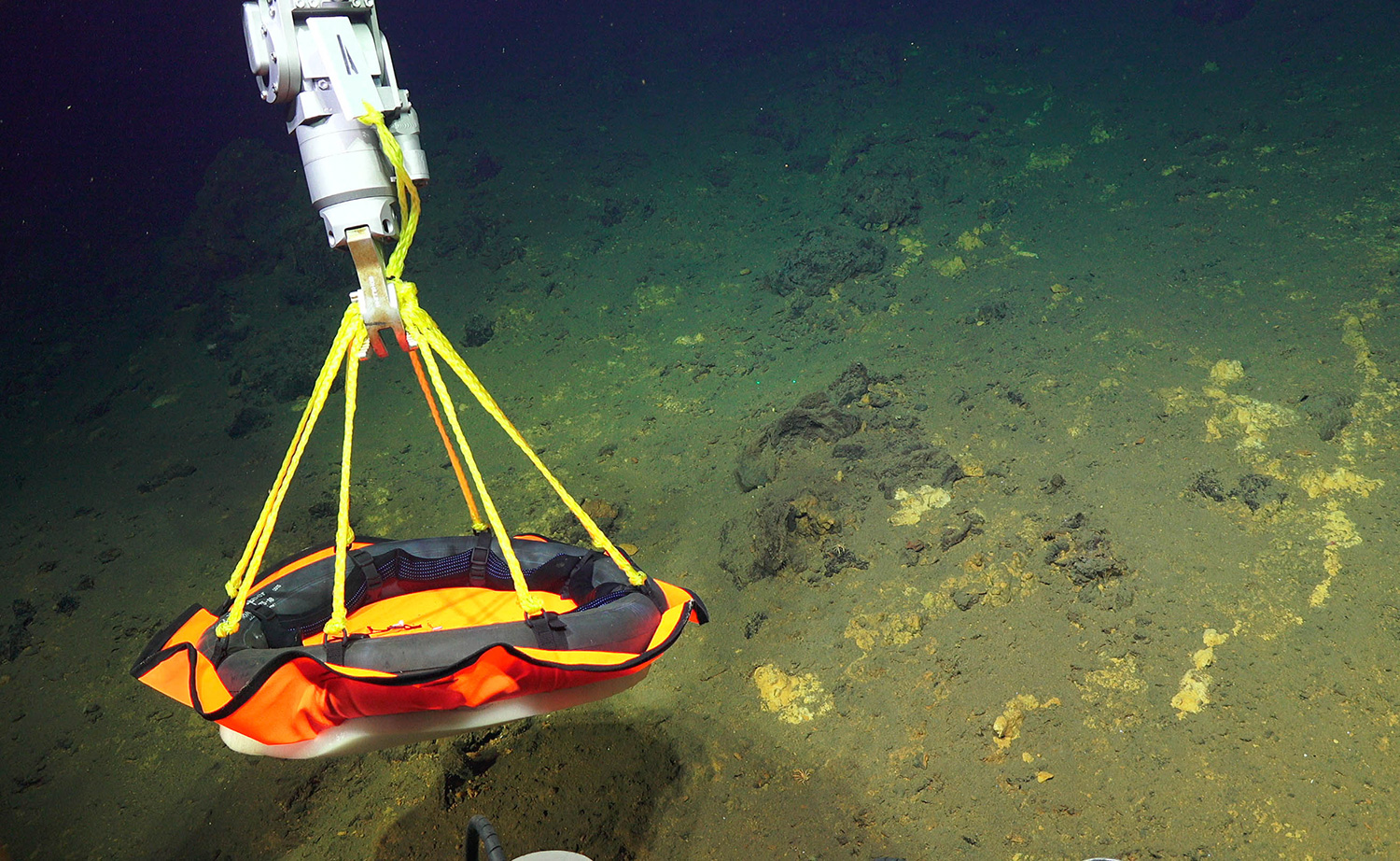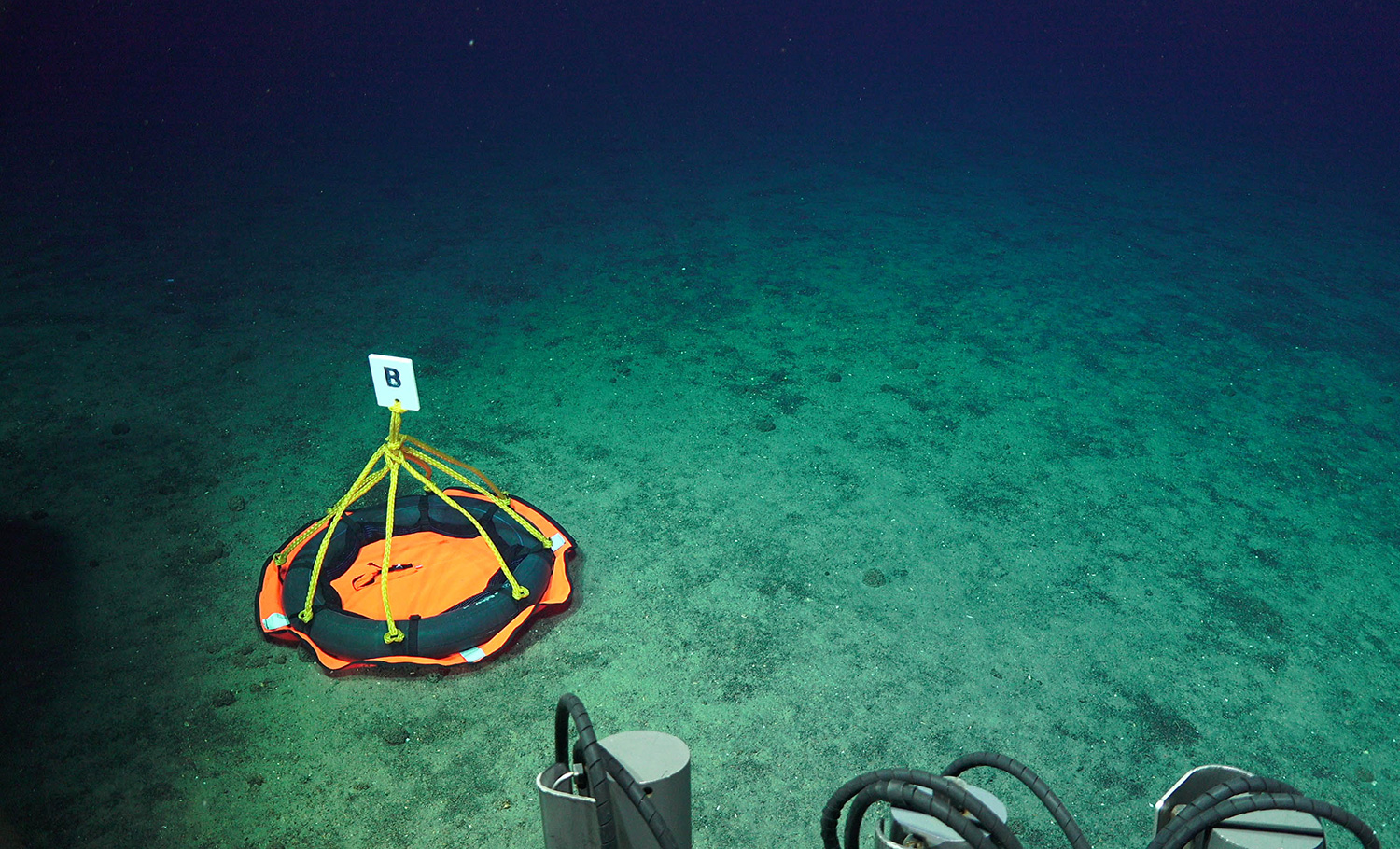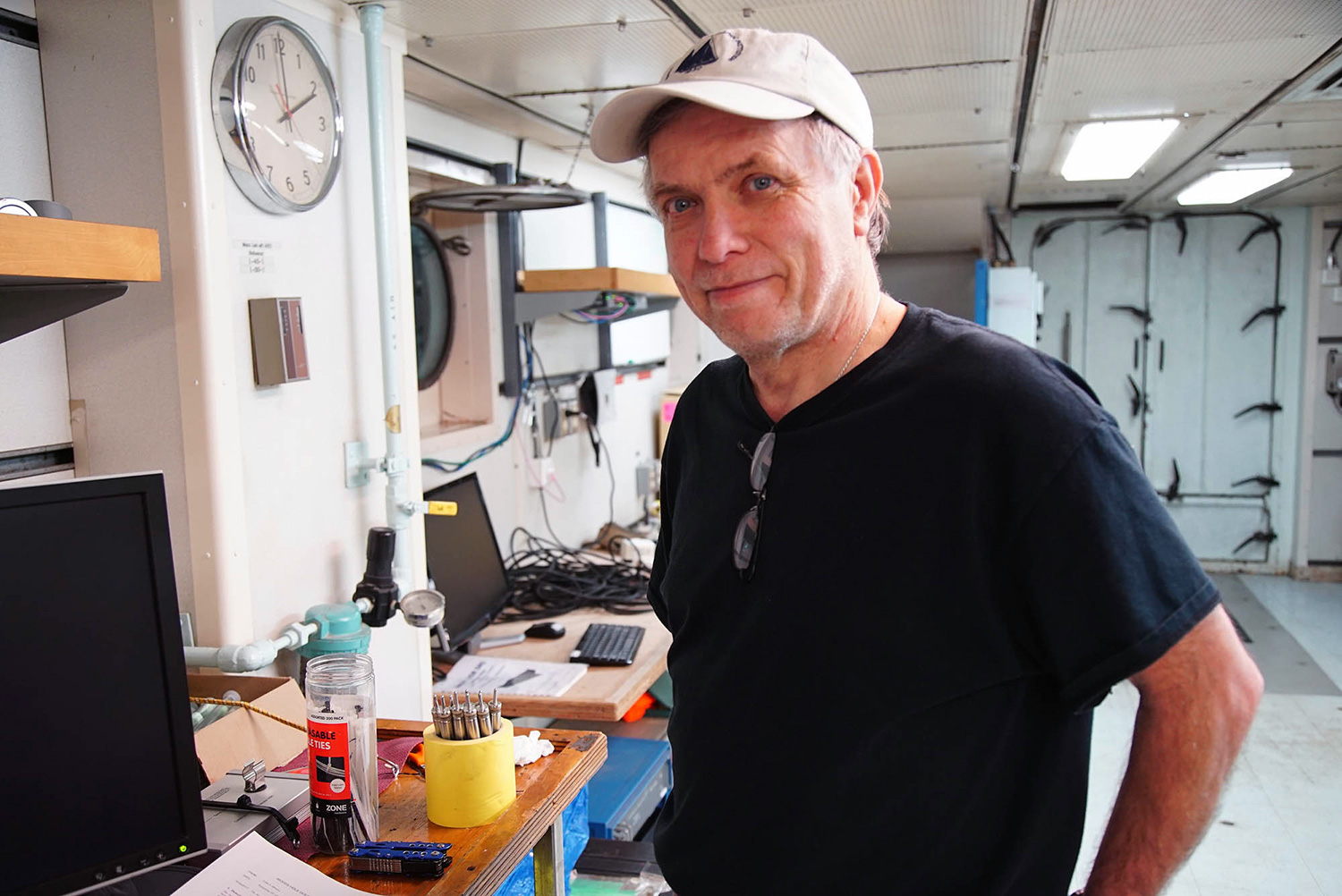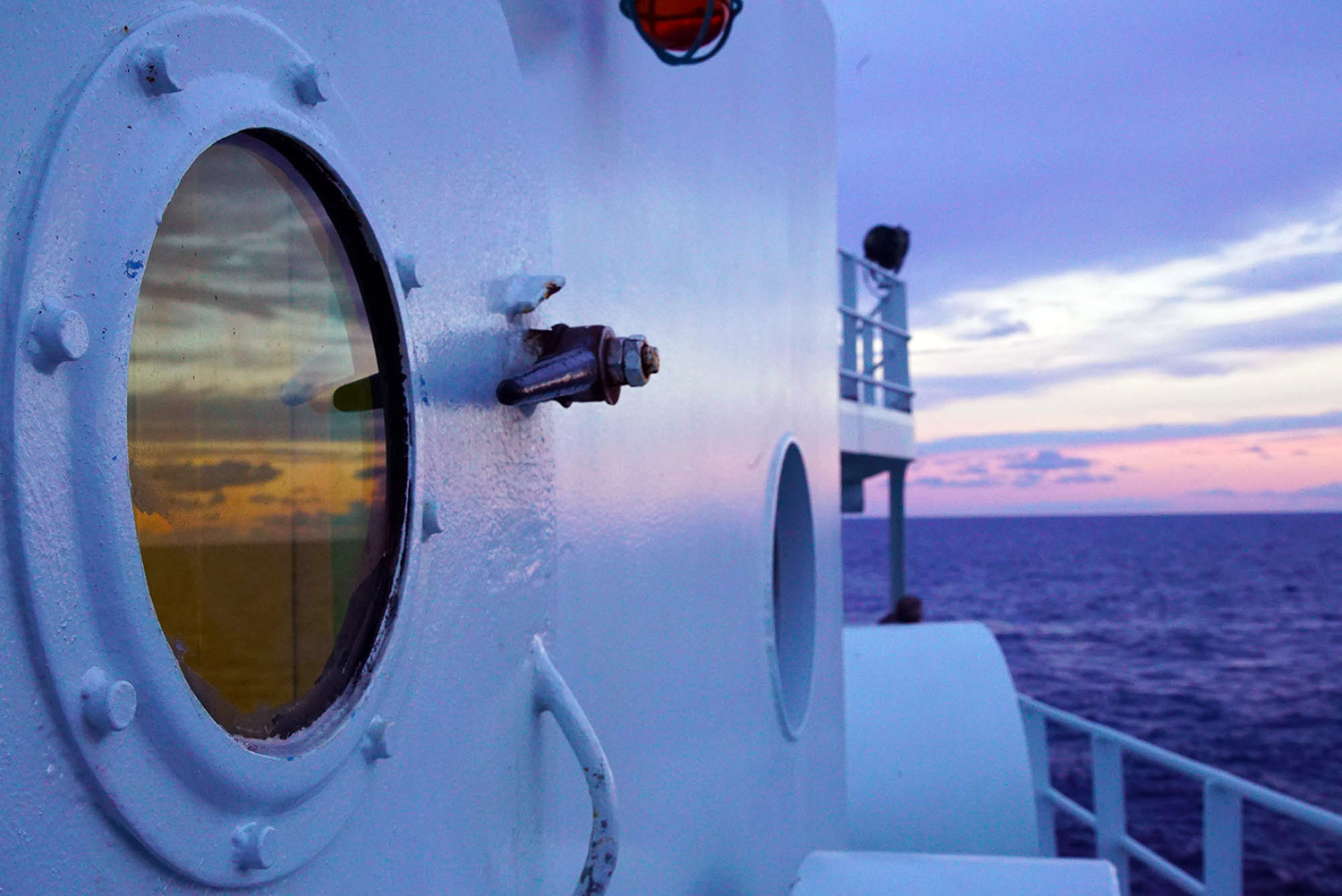Going with the Heat Flow
by Erik Olsen | March 17, 2018
You wouldn’t think that a lot could be learned by sending a bunch of motorcycle inner tubes down to the seafloor, but you’d be wrong.
One of the more unusual, yet powerful, tools on board R/V Thomas G. Thompson for our trip to Brothers volcano are the so-called thermal blankets, also called heat blankets. They are a novel invention designed and built by scientists at the University of Washington and used by the Brothers volcano team to measure heat flowing from the seafloor.
If you saw one of these heat blankets just lying around, you might think they were some kind of life preserver. Indeed, they are round and orange. But they are also powerful scientific instruments.
Inside the orange fabric is a motorcycle inner tube filled with very heavy salt water. We make this water on board, dissolving huge scoops of additional salt in seawater so that the water inside the tubes is much denser, and heavier, than the seawater itself.
When a blanket is placed in the seafloor, the flexible inner tube will conform to the bottom and form a seal, preventing seawater from seeping underneath.
The top and bottom of each blanket has sensitive thermometers encased in titanium to protect them from pressure and corrosion. These instruments are incredibly accurate, recording temperature down to a thousandth of a degree. The top thermometer will measure water temperature above the seafloor and the bottom will measure heat coming up from the volcano itself.
The blankets need to remain in place for at least eight hours so that the thermometers can equilibrate, or reach a stable value. “They need to adjust to the new environment down on the seafloor,” said Maurice Tivey, co-chief scientist of the expedition. “That takes some time.”
Once we have the data back on the surface, comparing the top and bottom measurements will provide what’s called a thermal gradient, which tells us how much heat is flowing out of the seafloor.
Why is heat flow important? In May, scientists will return to Brothers volcano to drill deep into the volcano in three or more locations to extract cylinders of rock called cores. Some of them will be 4 inches wide and hundreds of meters long. These cores will contain a bounty of information about how metal deposits are being formed in the hydrothermal vent system below the seafloor. Scientists believe there are vast quantities of metals like copper, zinc and gold beneath the vent systems.
Knowing how hot the seafloor is at the drilling sites is critical. The drill pipe, as it starts to work its way into the crust, will quickly reach high temperatures, perhaps 300-500 degrees Celsius (570-930°F). Knowing where the hot spots are ahead of time will inform them where it is safe to drill.
But there are also other scientific questions we hope to answer, particularly about the architecture of the vents themselves.
“There are several vent systems on this volcano,” said Tivey. “There are at least four, maybe more, and so: Are they all connected? How does the magma chamber influence the various hydrothermal vents systems?”
For the last several days, nine heat blankets have been laid across the seafloor and several have already been collected. The data is being analyzed now, and the scientists have been building a map of the heat flow across the volcano.
“I’m excited to see the relationship between these complex systems,” said Tivey. “This type of study has never been done before.”
Conditions:
Time: 6:00 p.m. NZST
Air temp: 21°C (70°F)
Water temp: 21°C (70°F)
Wind: 17 knots, SE
Sky: clear
Precipitation: None
Waves: 1-2 feet









